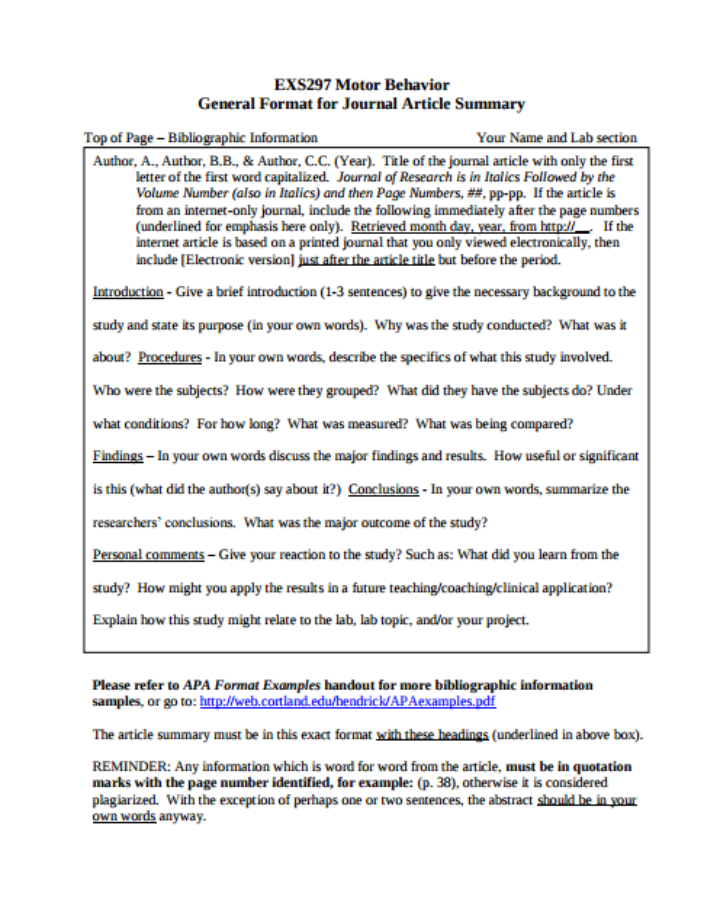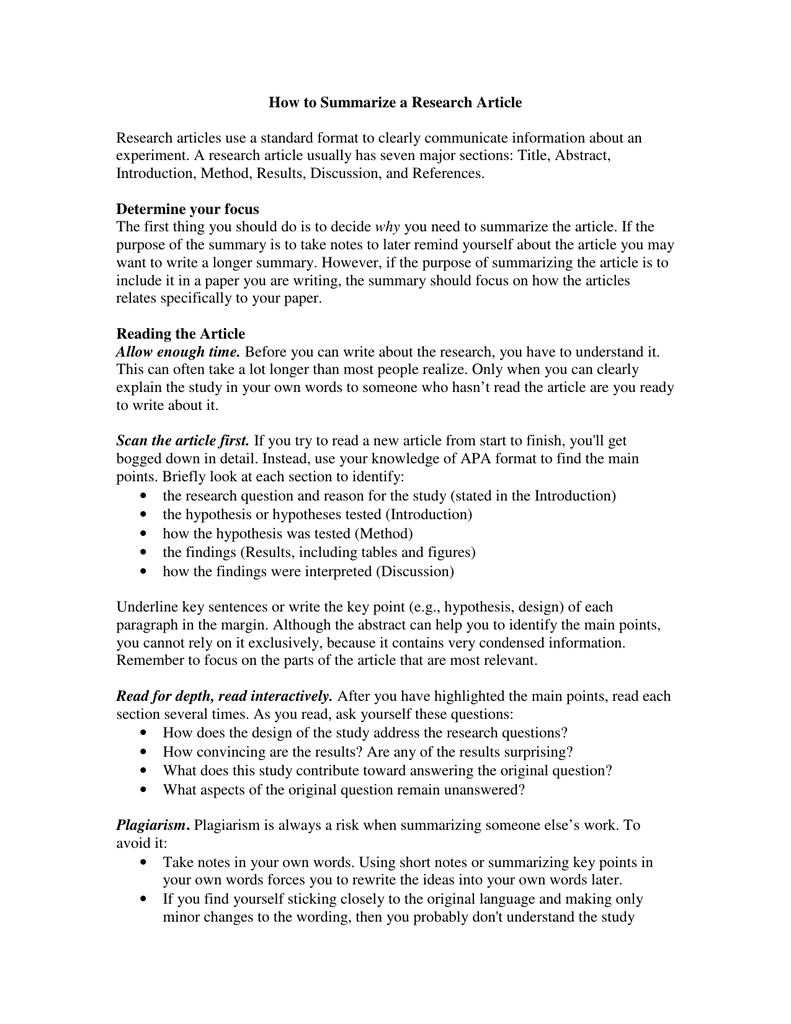

Do not copy and paste parts of the article, not even just a sentence or two. To avoid plagiarism and show you’ve understood the article, it’s essential to properly paraphrase the author’s ideas. Now that you know the key points that the article aims to communicate, you need to put them in your own words.

In that case, pay particular attention to the thesis statement-the central claim that the author wants us to accept, which usually appears in the introduction-and the topic sentences that signal the main idea of each paragraph. If the article takes a different form, you might have to think more carefully about what points are most important for the reader to understand its argument. What are the implications of the results?.How does the author explain these results?.What is the overall answer to the research question?.What research question or problem was addressed?.Key points of a scientific article Introduction In a scientific article, there are some easy questions you can ask to identify the key points in each part. Your goal is to extract the essential points, leaving out anything that can be considered background information or supplementary detail. Keep in mind that a summary does not involve paraphrasing every single paragraph of the article. What does your reader need to know to understand the overall argument or conclusion of the article? Now it’s time go through each section and pick out its most important points. Step 3: Identify the key points in each section If several paragraphs cover similar topics, you may group them together.

Tip: To see at a glance what each part of the text focuses on, try writing a word or phrase in the margin next to each paragraph that describes the paragraph’s content.
#Summarize article series#
But most articles and essays will be structured around a series of sub-points or themes. Other types of articles may not be explicitly divided into sections. If the text is a scientific paper that follows a standard empirical structure, it is probably already organized into clearly marked sections, usually including an introduction, methods, results, and discussion. To make the text more manageable and understand its sub-points, break it down into smaller sections. Step 2: Break the text down into sections

These should give you a good sense of what each part is about.


 0 kommentar(er)
0 kommentar(er)
